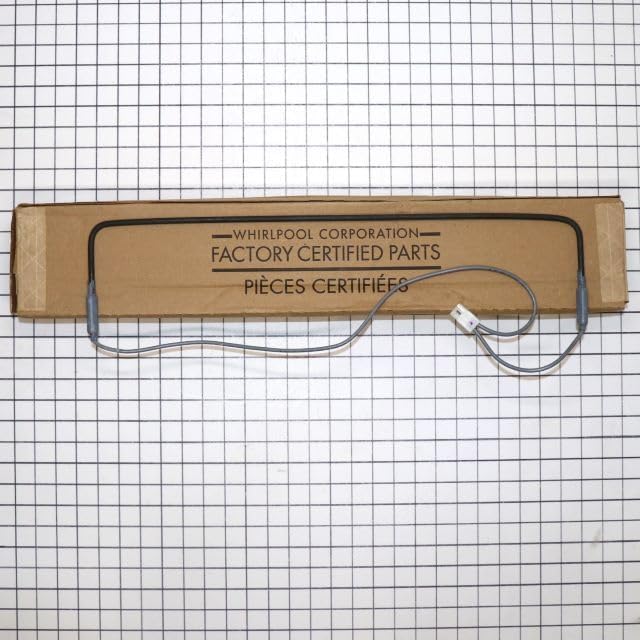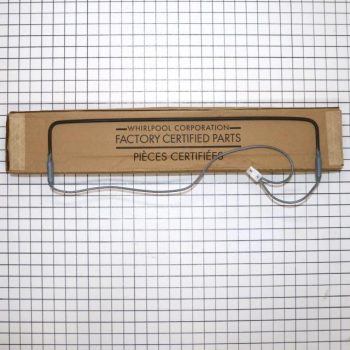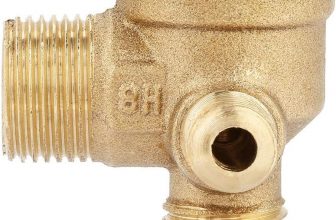
In the world of refrigeration, maintaining optimal temperature requires efficiently functioning parts. The WPW10436849 Refrigerator Defrost Heater Assembly is a crucial component that ensures your refrigerator runs smoothly. In this article, we will delve into its features, benefits, comparisons, and its importance in preventing frost buildup, thereby enhancing the efficiency of your appliance.
Product Features
| Feature | Description |
|---|---|
| Genuine OEM Part | Ensures high quality and compatibility with your refrigerator. |
| Part Number | WPW10436849 replaces W10436849 |
| Product Description | Refrigerator Defrost Heater Assembly that helps to melt frost buildup. |
Product Overview
| Pros |
|---|
| Genuine OEM part ensures reliability |
| Easy installation for most users |
| Enhances refrigerator efficiency |
| Cons |
|---|
| Limited customer reviews to assess long-term performance |
| Compatibility may vary with older models |
Understanding the Importance of the Defrost Heater Assembly
The installation of the WPW10436849 defrost heater assembly is critical for restoring and maintaining optimal refrigerator performance. To begin, it’s essential to gather a few tools: a screwdriver, a multimeter, and a clean cloth or rag. First, ensure the refrigerator is unplugged to prevent any electrical hazards. I’ve always found it useful to have a flashlight on hand for those hard-to-see spots.
Once you’ve opened the back panel of the refrigerator, locate the old defrost heater assembly. Disconnect it carefully, taking note of how the wires are connected. Refer to your repair manual if you’re unsure. When installing the new assembly, it’s vital to connect the wires exactly as they were before, ensuring a snug fit.
As for maintenance, I recommend checking the defrost heater at least once a year. This includes inspecting for any signs of wear or damage, which can easily develop over time. Regular cleaning of the refrigerator interior can also help maintain the efficiency of the heater. If you notice unusual frost patterns or hear unusual noises, using a multimeter to test the heater’s continuity could save you from bigger issues down the line. Addressing these potential problems early on not only prolongs the life of the heater but also keeps your refrigerator running smoothly.
Installation and Maintenance of the WPW10436849
When it comes to installing the WPW10436849 defrost heater assembly, it’s important to ensure that you have the right tools and materials for a successful installation. To begin, gather a screwdriver, a multimeter to check electrical connections, and some insulated gloves for safety. I personally find having a flashlight handy helps illuminate the work area nicely.
First, disconnect the refrigerator from the power source. It’s crucial to prevent any electrical hazards while you work. Once unplugged, remove the refrigerator cover to access the old defrost heater assembly. Be cautious as you detach any connected wiring. I recommend taking pictures during the disassembly process—it aids in accurate reassembly.
Next, install the new heater by following the wiring layout from your earlier photos. Make sure to secure the heater firmly, avoiding any loose connections that could lead to inefficiency. After installation, reconnect the power and monitor the refrigerator through a complete defrost cycle, ensuring that everything operates as expected.
For maintenance, I suggest checking the defrost heater regularly. Look for signs of wear or corrosion, and clean any dust accumulation around the unit. A multimeter can come in handy to test if the heater is functioning properly. Should you notice any performance drops, troubleshooting should begin with checking the electrical connections, as loose or frayed wires are common culprits.
Conclusions
In conclusion, the WPW10436849 Refrigerator Defrost Heater Assembly is an indispensable part for anyone looking to maintain their refrigerator’s efficiency. With its genuine OEM status and straightforward installation, it stands out as a worthy investment for your appliance. While it has limited reviews, its essential function speaks volumes about its necessity in preventing frost buildup.








